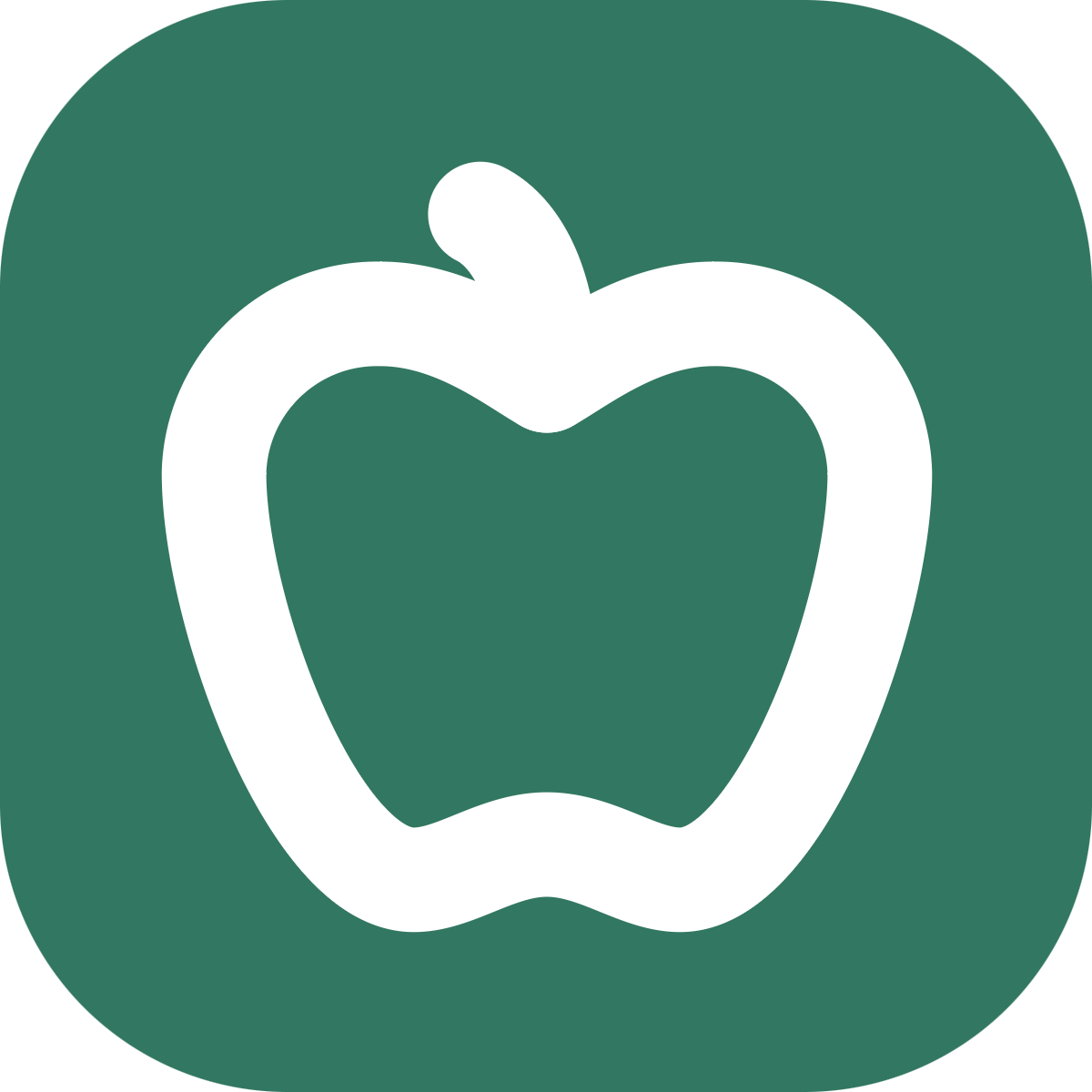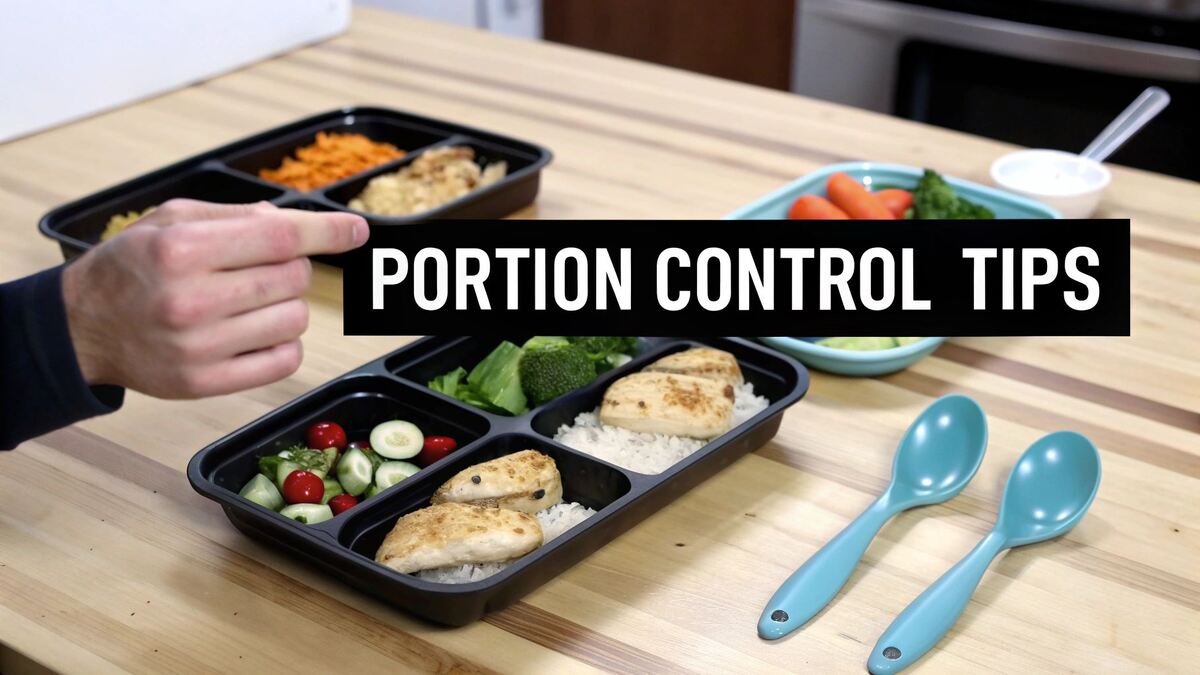Effective Portion Control for Weight Loss Tips
Portion control is less about restriction and more about awareness. It’s the simple, powerful act of managing how much food you put on your plate, which is a proven path to successful weight loss. By focusing on serving sizes, you naturally steer your daily calorie intake, creating the deficit needed to lose weight without feeling like you're on a harsh diet.
Why Portion Control Is Your Weight Loss Superpower
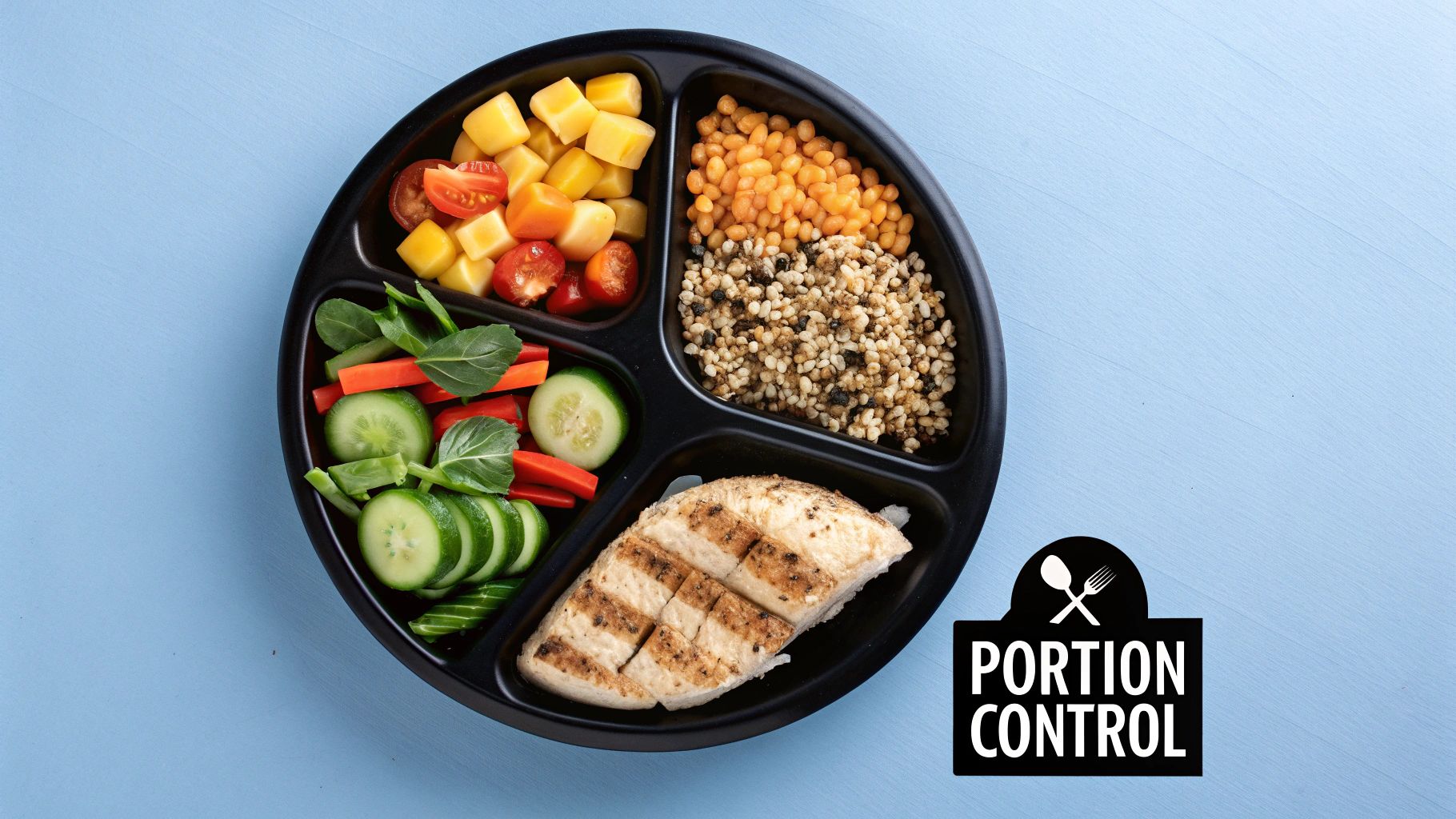
It's easy to get tangled up in complicated diet fads, but the real secret to lasting weight loss often comes down to this one habit. The idea is straightforward, but its effect is huge. Think about how much our food environment has changed over the last few decades—restaurant portions, packaged snacks, and even the dinner plates in our cupboards have gotten noticeably bigger.
This trend is often called "portion distortion," and it quietly tricks us into eating far more than our bodies actually need. When a restaurant serves you a mountain of pasta or a bagel the size of your hand, your brain tends to register that as a normal, single serving. Without consciously adjusting, you can easily add hundreds of extra calories to your day, which, over time, leads directly to weight gain.
The Science of Serving Sizes
The link between how much you eat and how many calories you consume is backed by a ton of research. At its core, weight loss happens when you create a calorie deficit—burning more calories than you take in. Portion control for weight loss is the most direct way to manage the "calories in" side of that equation.
Study after study shows that simple swaps, like using smaller plates or buying pre-portioned snacks, can cut daily calorie intake by 10-30%. One well-known study found that people who ate from smaller plates consumed 22% fewer calories than those using larger ones. That’s a massive impact from such a tiny change. When you consider that a daily deficit of around 500 calories can lead to losing about one pound per week, these small adjustments really add up.
The magic of portion control is that it puts you back in the driver's seat. Instead of food manufacturers or restaurants dictating how much you eat, you regain control over your own intake, meal by meal.
For anyone looking to make a quick start, a few simple strategies can deliver immediate results.
Quick Portion Control Wins For Immediate Impact
Here’s a look at some easy changes you can implement today to start seeing a difference.
| Strategy | How It Works | Potential Calorie Reduction |
|---|---|---|
| Use Smaller Plates | A 9-inch plate looks full with less food than a 12-inch one, tricking your brain into feeling satisfied with a smaller portion. | 10-22% per meal |
| Serve from the Stove | Plating your food in the kitchen instead of putting serving dishes on the table removes the temptation for mindless seconds. | 15-20% per meal |
| Drink a Glass of Water | Drinking water 15-20 minutes before a meal helps you feel fuller, leading to less overeating. | 75-90 calories per meal |
| Start with a Salad | A small, low-calorie salad before your main course fills you up with fiber and nutrients, reducing overall meal intake. | ~10% of total calories |
These are just starting points, but they illustrate how small, intentional actions can have a significant impact on your daily calorie count.
Beyond the Plate A Psychological Shift
Honestly, mastering portion control is just as much about retraining your brain as it is about anything else. It’s a shift from mindless eating—where you just keep going until the plate is clean—to mindful consumption. You start tuning into your body's real hunger and fullness cues. That psychological change is what makes this a sustainable, long-term habit.
Whether you're aiming for weight loss or trying to fuel athletic performance, getting a handle on your food intake is non-negotiable. Athletes meticulously manage their portions to optimize their energy, and you can learn a lot from that approach when creating an ultimate nutrition plan. By focusing on appropriate serving sizes, you’re not just dieting; you're building a healthier, more intuitive relationship with food that serves your goals for good.
Get a Handle on Portions with Visual Cues
Let's be realistic—lugging a food scale to a restaurant or a family dinner just isn't going to happen. The good news is, you don't need one. You've already got the most practical portion control tool with you at all times: your hands.
Learning to eyeball serving sizes using your hand is a game-changer. It turns portion control from a chore into an intuitive skill you can use anywhere, anytime. You're building lasting knowledge, not just a reliance on a kitchen gadget.
Your Hand Is Your Ultimate Guide
It sounds almost too simple, but your hand is a surprisingly accurate and personalized measuring cup. Because it's proportional to your own body, it's a fantastic reference point for your nutritional needs.
Here’s a quick breakdown of how to use it:
- Protein: A serving of chicken, fish, or tofu should be about the size and thickness of your palm (not including your fingers).
- Carbohydrates: For carbs like rice, pasta, or potatoes, think of a portion that's roughly the size of your clenched fist.
- Fats: When it comes to dense fats like oils, butters, and seeds, a serving is about the size of your thumb.
- Vegetables: For all those great non-starchy veggies (broccoli, spinach, peppers), you can be generous—aim for a portion that would fill two open hands cupped together.
This becomes second nature surprisingly fast. When a plate of pasta arrives at your table, you can discreetly compare it to your fist. If the serving is huge, you instantly know to eat about half and save the rest. No math, no stress.
Build a Better Plate with the Healthy Plate Model
Another fantastic visual trick is the Healthy Plate Model. I love this method because it's less about restriction and more about building a balanced, satisfying meal. It automatically guides your portions while boosting the nutritional quality of what you eat.
Just picture your plate as a circle. Draw an imaginary line down the middle, then split one of those halves in two. You'll end up with three distinct sections.
Now, you have a blueprint for every meal. Here’s how you fill it up:
- Half Your Plate: This is the biggest section, and it’s reserved for non-starchy vegetables. Load it up with leafy greens, bell peppers, asparagus, or zucchini.
- One Quarter of Your Plate: This space is for your lean protein. That palm-sized portion of grilled chicken or lentils fits perfectly here.
- One Quarter of Your Plate: The last section is for your complex carbohydrates—think of that fist-sized serving of quinoa, brown rice, or sweet potato.
By filling half your plate with veggies first, you're visually prompted to prioritize nutrient-dense, lower-calorie foods. It’s a simple shift that helps you feel fuller on fewer calories. Pro tip: using a slightly smaller plate, around 9 inches in diameter, makes this even more effective.
The image below really brings home how these consistent, small adjustments add up to a calorie deficit that drives real weight loss.
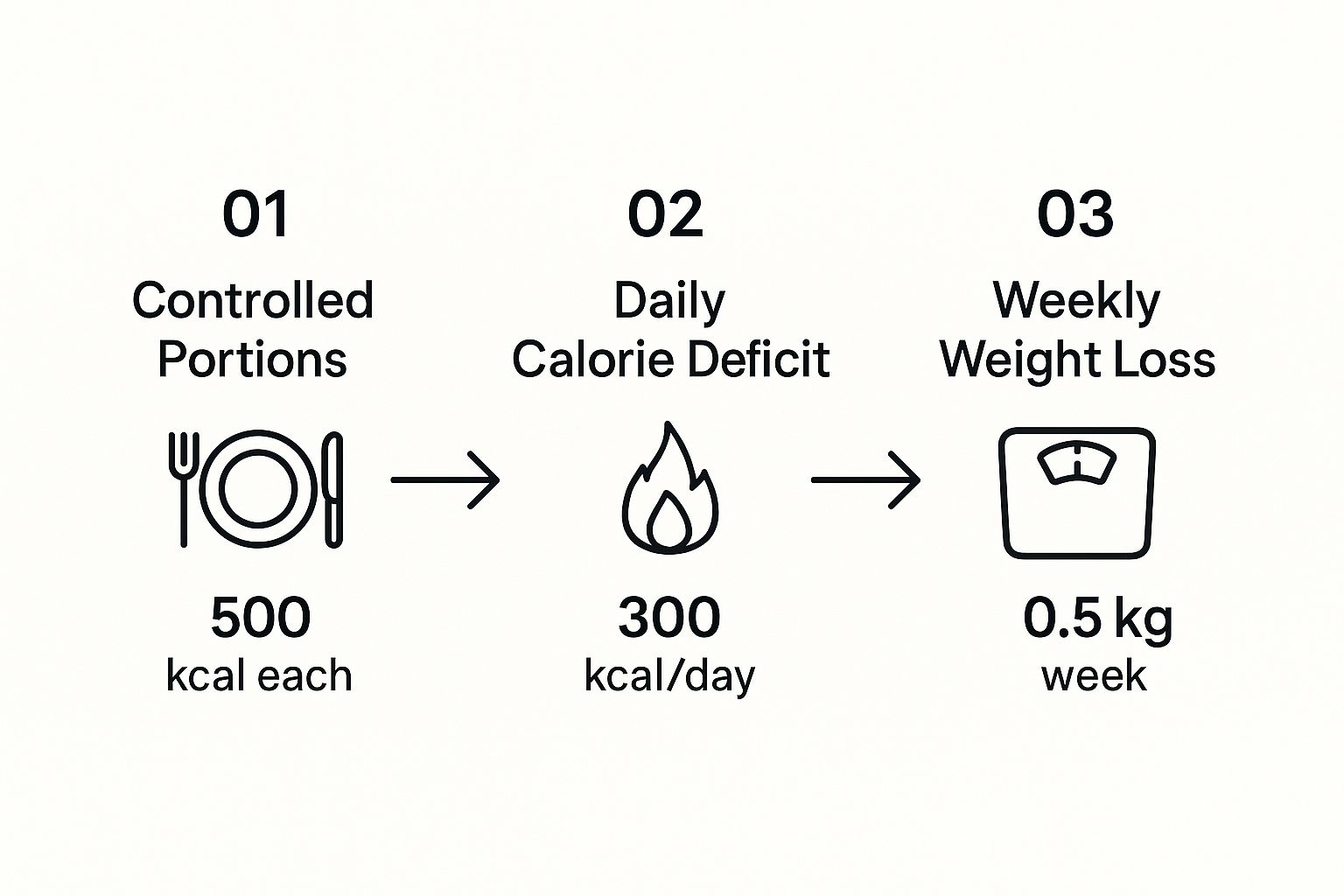
As you can see, controlled portions at each meal create a snowball effect for your weekly progress. These visual cues are incredibly powerful. If you want to take this a step further, the AI Meal Planner can automate this entire process for you, generating recipes that are already perfectly portioned and balanced.
Getting Precise with Kitchen Tools
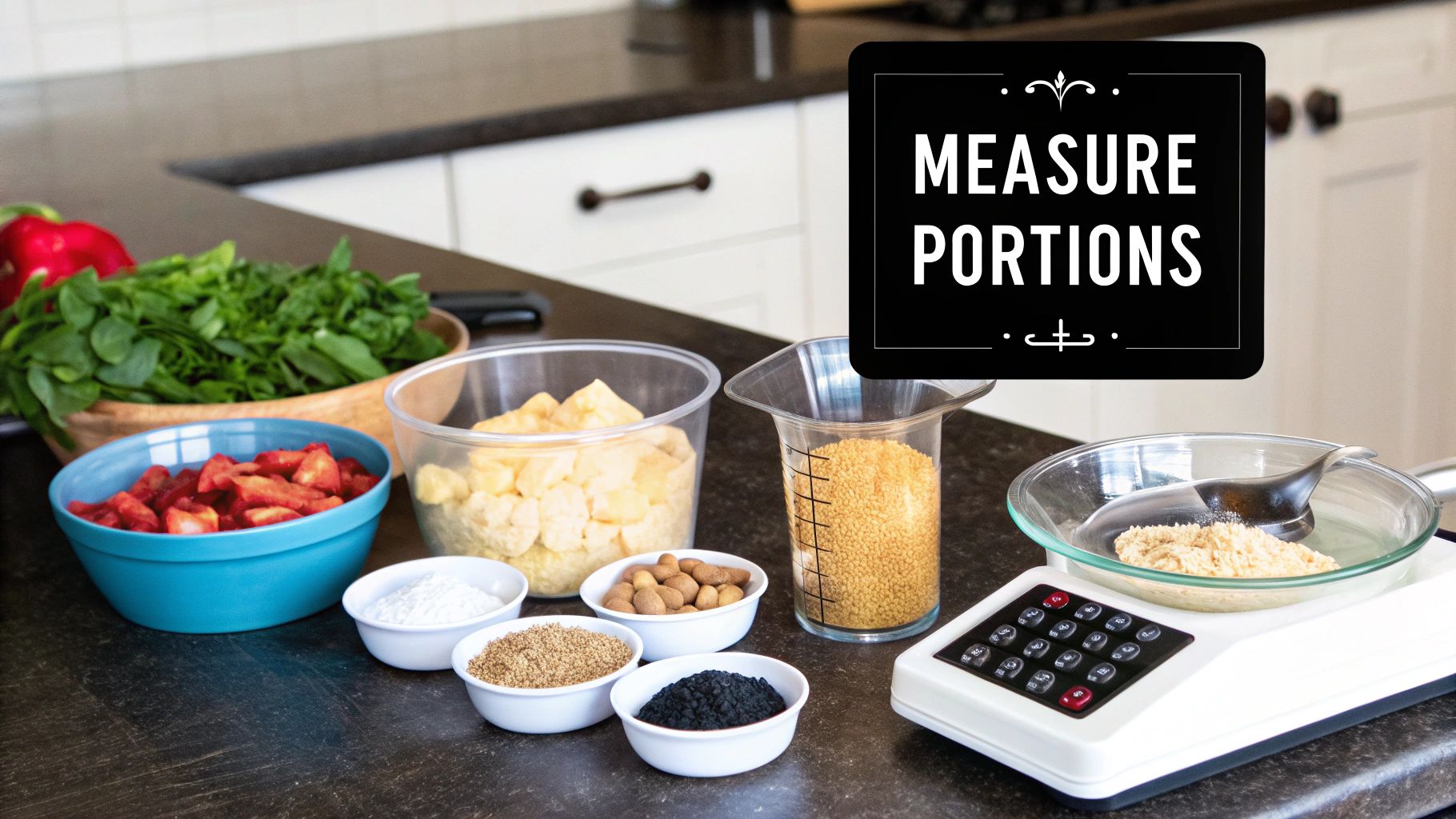
While eyeballing your portions is a great skill for everyday life, sometimes you need to get more precise. This is especially true when you're dealing with calorie-dense foods, where a small "oops" can quietly derail your progress.
Think about it: an extra tablespoon of peanut butter or a heavy-handed pour of olive oil might not look like much, but that can easily tack on an extra 100-120 calories. When you're just starting out, what you think is a serving size and what actually is a serving size can be two very different things.
This is where a few simple kitchen tools become your secret weapons. It's not about being obsessive; it’s about training your eyes. You’re building a mental library of what correct portions look like, which is a skill that will serve you long after you put the tools away.
Why You Need a Digital Food Scale
If I could recommend just one tool to anyone serious about their nutrition, it would be a digital food scale. Honestly, it's a game-changer. It takes all the guesswork out of the equation and gives you hard data, which is exactly what you need for accurate calorie and macro tracking.
A scale is a lifesaver for foods that are impossible to measure by volume—a chunk of cheese, a piece of chicken, or a handful of almonds. When you weigh your food, you know the exact gram amount. This precision is what allows you to trust your numbers and ensure you're consistently hitting your goals.
Think of a food scale as a temporary teacher. You don't have to weigh every meal for the rest of your life. Just use it diligently for a few weeks. You'll quickly learn what 4 ounces of chicken or 30 grams of nuts really looks like on your plate.
Making Measuring Cups and Spoons Work for You
Of course, measuring cups and spoons still have their place in the kitchen, especially for liquids, grains, and powders. They are your first line of defense against accidentally turning a healthy meal into a high-calorie one.
- Oils & Dressings: Always, always use a measuring spoon for these. What most of us call a "drizzle" is often two or three tablespoons. Those calories add up fast.
- Grains & Legumes: Before you cook them, use measuring cups for dry goods like rice, lentils, or quinoa. It's the easiest way to control the final cooked volume.
- Nuts & Seeds: These are powerhouses of nutrition, but they're also incredibly calorie-dense. Using a small measuring cup (like 1/4 cup) keeps a healthy handful from becoming a calorie bomb.
Using these tools bridges the gap between the nutritional information on a label and the actual food on your plate.
And for a final pro-tip: pre-portioned containers are your best friend for meal prep. After you've weighed and measured your meal components, pack them into single-serving containers. This simple step makes grabbing a healthy meal during a busy week completely automatic. It cuts down on decision fatigue and stops you from mindlessly overeating right out of the big container.
Listening to Your Body's Hunger Signals
When it comes to portion control, what's happening inside your body is just as important as what's on your plate. Forget rigid rules for a moment. The most sustainable skill you can ever build is learning to tune into your body’s natural hunger and fullness signals. This is often called mindful eating, and it's less about a diet and more about creating a genuine partnership with your body.
The entire goal is to shift your focus inward. Instead of just cleaning your plate out of habit, you start asking a simple, yet powerful, question: "Am I actually still hungry?"
Differentiating Hunger Types
Let’s be honest, not all hunger feels the same. A huge step in getting portion control right is learning to tell the difference between true, physical hunger and all the other things that make us want to eat. This awareness is what stops you from eating out of boredom, stress, or just because the clock says it's lunchtime.
Physical Hunger: This is the real deal. It builds up gradually. You might feel your stomach gently rumble, your energy levels dip, or maybe a slight headache starts to creep in. That’s your body giving you a legitimate signal that it needs fuel.
Emotional Hunger: This one is a sneak attack. It hits you suddenly and usually comes with an intense craving for a specific comfort food (hello, chocolate!). It’s almost always tied to a feeling—like the stress after a brutal workday—rather than an actual empty stomach.
Once you can spot the difference, you can address what's really going on. If you're stressed, maybe a quick walk or five minutes of deep breathing would serve you better than a bag of chips. That simple pause is your best defense against mindless overeating.
How to Practice Mindful Eating
The secret to listening to your body? Just slow down. It takes a surprisingly long time—about 20 minutes—for your stomach to signal to your brain that it's full. If you eat too fast, you'll blow right past that signal and end up eating far more than you actually needed.
Simply putting your fork down between bites and chewing your food thoroughly gives your brain the time it needs to catch up with your stomach. This one small change can mean the difference between feeling perfectly satisfied and uncomfortably stuffed.
Think about a big family dinner. The food is amazing, and everyone's encouraging you to go back for seconds. Instead of automatically piling more on your plate, just pause for a minute. Check in with yourself. Are you genuinely hungry for more, or are you just going with the flow? Learning to honor your body’s signals over outside pressure is a massive win.
Beyond all the measuring cups and plate diagrams, building this strong connection with your body is what makes portion control stick. You can explore this idea further by delving deeper into how to listen to yourself.
When you build this internal awareness, portion control stops being a short-term diet tactic and becomes a lifelong, healthy relationship with food. It becomes less about restriction and more about respecting what your body truly needs.
Navigating Restaurants and Social Events
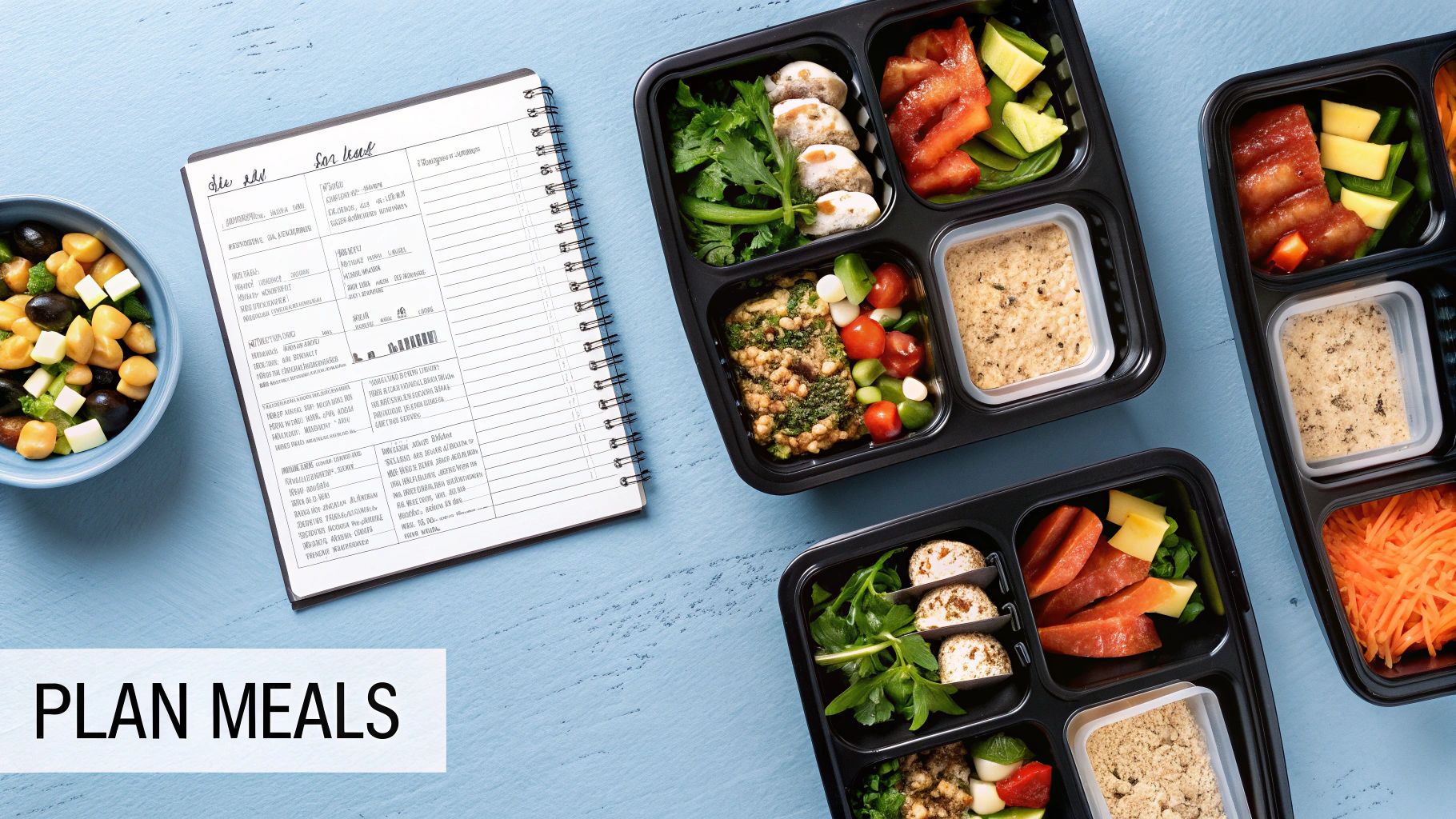
Let’s be honest, the real test of our portion control skills comes when we're not in our own kitchen. Restaurants and social get-togethers are famous for their gigantic servings and the subtle pressure to just go with the flow. But with a little forethought, you can absolutely enjoy yourself without derailing your progress.
The trick is to have a game plan before you even walk through the door. Don't leave your choices to the whims of the moment or rely on sheer willpower to get you through. A few minutes of prep can turn a potentially tricky situation into one you handle with confidence.
Your Pre-Dining Playbook
Setting yourself up for success starts before you even leave the house. One of the best things you can do is pull up the restaurant’s menu online. This lets you scout out healthier, portion-sensible options without a waiter tapping their pen while you decide.
Look for words like grilled, baked, or steamed instead of fried. Pay close attention to the sides, too—swapping fries for a side salad or steamed veggies is a classic move for a very good reason. Knowing what you’re going to order ahead of time helps quiet the "what if" voice that tempts you toward less healthy choices.
The challenge of managing what we eat is a massive global issue. Worldwide obesity rates have been climbing since 2010, and forecasts suggest that by 2035, more than 50% of the global population could be overweight or obese. A huge part of this is simply eating too many calories, driven by ever-expanding portion sizes. In countries like the United States and Australia, for example, about 66% of adults are already in this category. You can read more about this public health trend and its solutions on businesswire.com.
Strategies for the Table
Once you're at the restaurant or event, you've got several powerful moves to keep your portion control for weight loss on track.
- Ask for a To-Go Box Immediately. Seriously, do this when your meal first arrives. Before taking a single bite, slice your entrée in half and pack it away. This instantly removes the temptation to clean your plate and gives you a perfectly portioned lunch for tomorrow. Out of sight, out of mind.
- Share and Conquer. Splitting a main dish with a friend is a brilliant way to enjoy something rich without overdoing it. Most restaurant entrees are easily large enough for two people, especially if you each get a side salad to go with it.
- Build a Smarter Buffet Plate. When faced with a buffet, start by filling half your plate with greens and non-starchy vegetables. Next, add a palm-sized portion of protein. This leaves just a small quadrant for starches or richer items, naturally creating a balanced meal.
- Be the Appetizer Person. If you aren't starving, ordering two healthy appetizers instead of a huge main course can be a perfect meal. Think shrimp cocktail and a caprese salad—satisfying and properly portioned.
And remember, it’s always okay to politely decline a second helping at a friend's dinner party. A simple, "That was incredible, but I'm perfectly full, thank you!" is both gracious and effective. These small, consistent choices are proof that you can stick to your goals while still living your life to the fullest.
Answering Your Biggest Questions About Portion Control
Diving into portion control feels straightforward at first, but the day-to-day reality can bring up some tricky questions. Let's get into the nitty-gritty and clear up some of the most common hurdles people face when they're trying to make this a lasting habit.
How Long Does It Really Take to Get Used to Smaller Portions?
This is probably the number one question I hear, and the answer has two parts: the physical and the mental.
Physically, your stomach is remarkably adaptable. It can start adjusting to smaller volumes of food in just a few days. The real challenge, though, is retraining your brain. We’re often conditioned to eat until we're stuffed, and breaking that habit takes a bit of time.
A great trick to ease into this is to switch to smaller plates and bowls. It’s a simple visual cue that makes a properly-sized meal look more substantial, which helps your brain feel satisfied. Most people find their new normal and feel completely comfortable within 2-4 weeks of sticking with it.
Do I Have to Weigh and Measure My Food Forever?
Nope, definitely not. Think of your food scale and measuring cups as training wheels. They’re absolutely vital in the beginning because they teach you what an actual serving of oats or a tablespoon of peanut butter looks like (it's often smaller than you think!).
The goal isn't to be dependent on these tools for the rest of your life. Use them consistently for a few weeks to build a solid mental library of portion sizes. Once you can eyeball a serving of chicken or pasta with reasonable accuracy, you can graduate to using visual cues, like the hand-size guide we talked about. Just keep the tools around to spot-check yourself now and then, especially with new foods.
Portion control isn’t about deprivation—it’s about awareness. It’s about building a sustainable relationship with food where you can enjoy everything in moderation. This mindset shift is what unlocks long-term success.
What if I'm Still Hungry After Eating My Meal?
First things first: pause. It takes the brain about 20 minutes to get the message from your stomach that you're full. Before you even think about a second helping, drink a big glass of water and just wait. You'll often be surprised that the hunger pangs simply fade away.
If you've waited and you’re still genuinely hungry, look at the composition of your meal. Did it have enough protein and fiber? A meal lacking these key nutrients won't keep you satisfied for long. Instead of reaching for more of the same, add something smart. A handful of almonds, some Greek yogurt, or a few carrot sticks can do the trick without derailing your efforts.
Can I Still Eat the Foods I Actually Love?
Yes! A thousand times, yes. This is the beauty of focusing on portion control for weight loss. Forget those rigid diets that label foods as "good" or "bad." That kind of thinking just leads to cravings and guilt.
If you want pizza, have a slice or two, but pair it with a giant, veggie-packed salad. Craving ice cream? Serve yourself a single scoop in a small bowl instead of sitting down with the entire pint. When you plan for these foods and manage the amount, you can enjoy them without feeling like you've failed. It's this balance that turns a diet into a lifestyle you can actually live with.
Ready to stop guessing with your portions? The AI Meal Planner designs custom meal plans with precise portion sizes calculated for your specific weight loss goals. Let us handle the numbers so you can focus on enjoying your food. Start building your perfect plan today at https://ai-mealplan.com.
AI-powered nutrition
Get Your Personalized Meal Plan
AI creates the perfect meals for your goals, lifestyle, and taste.
Start Your Journej